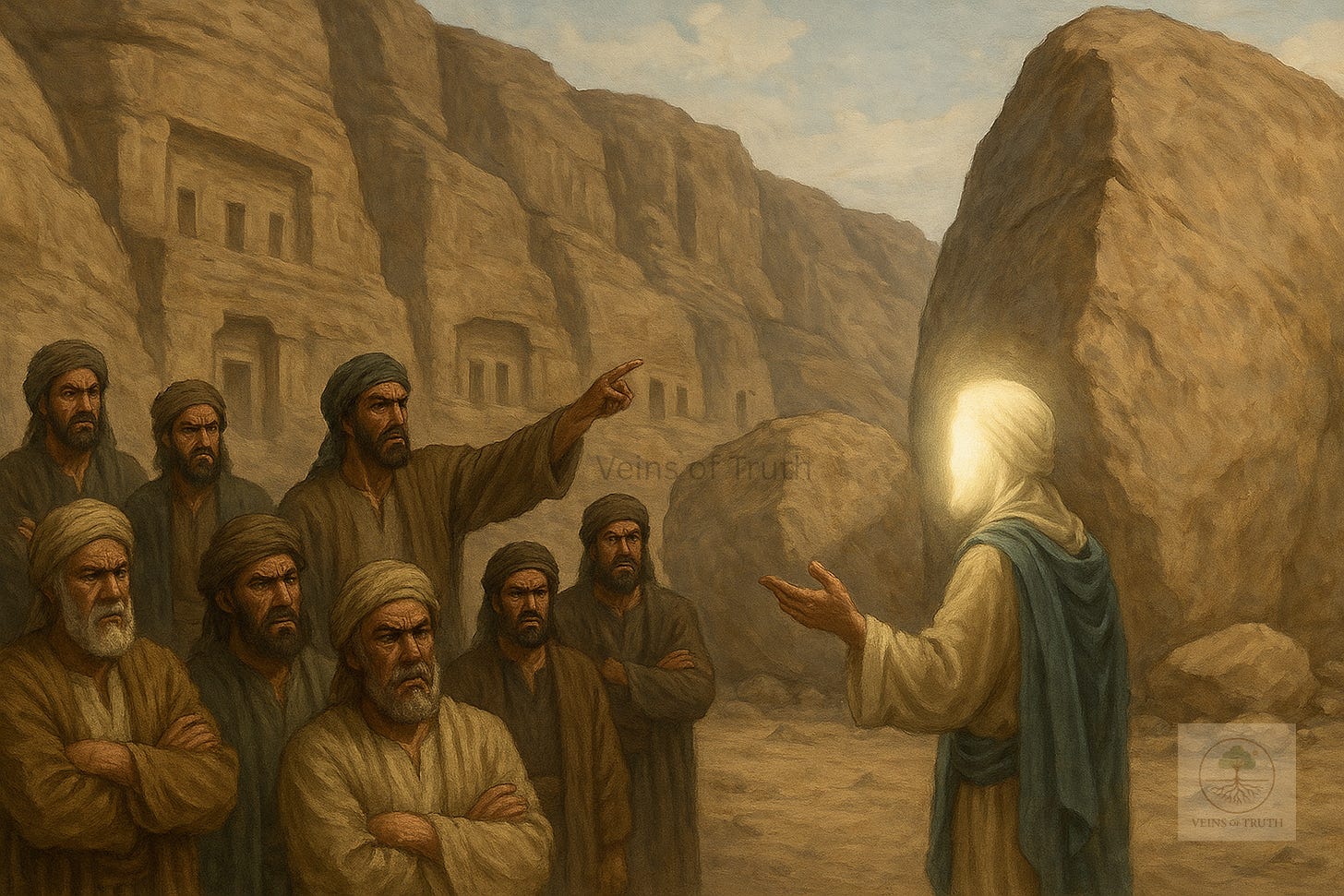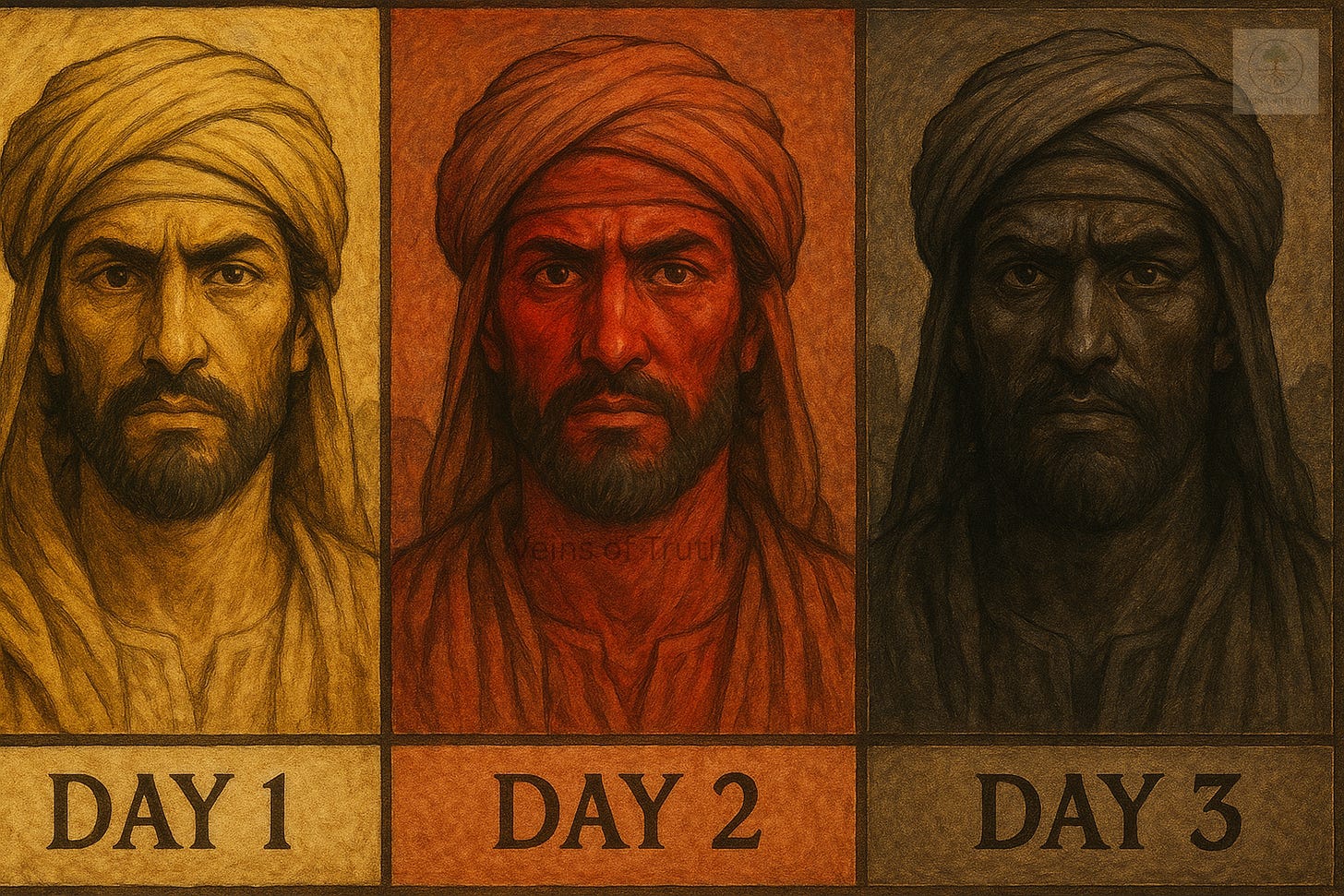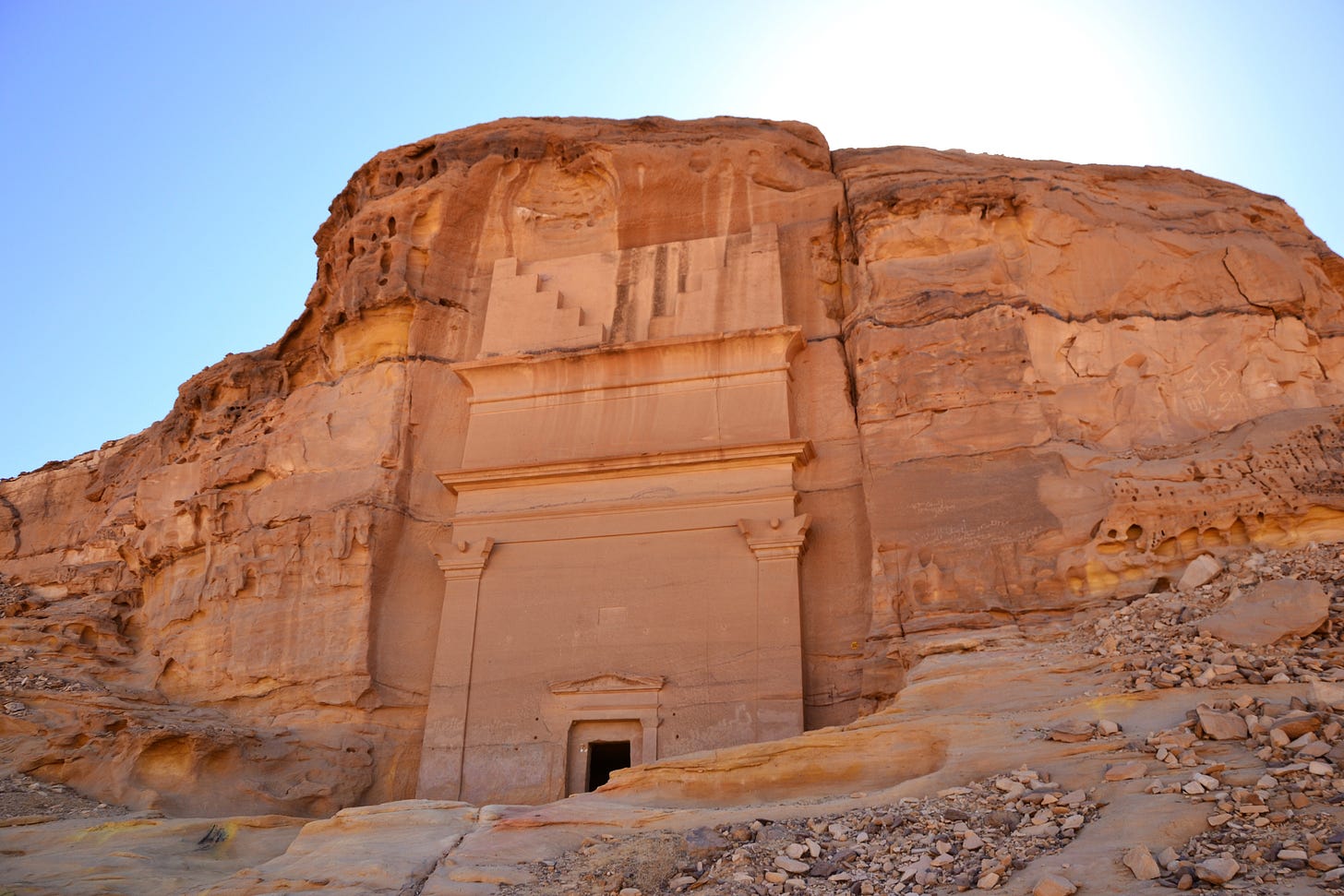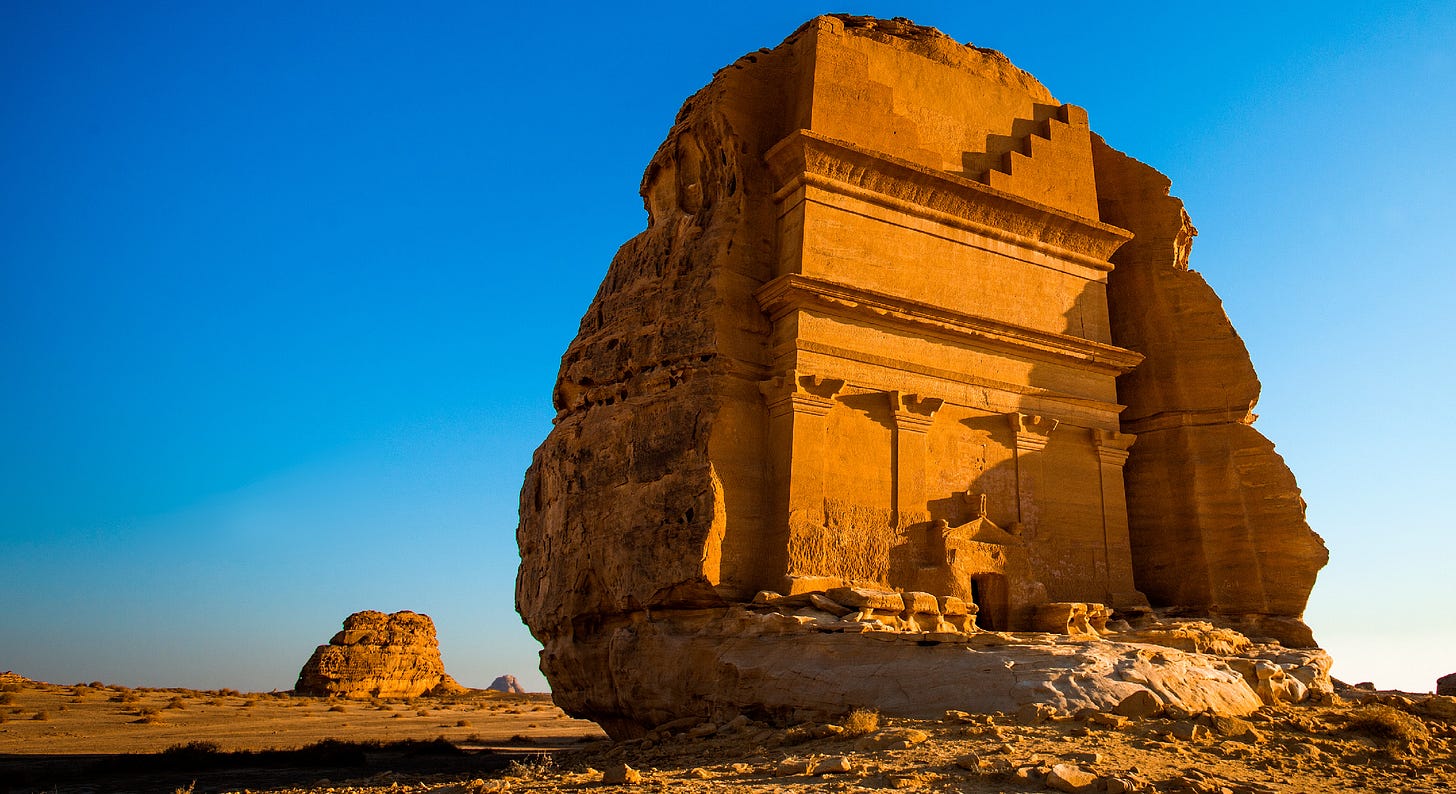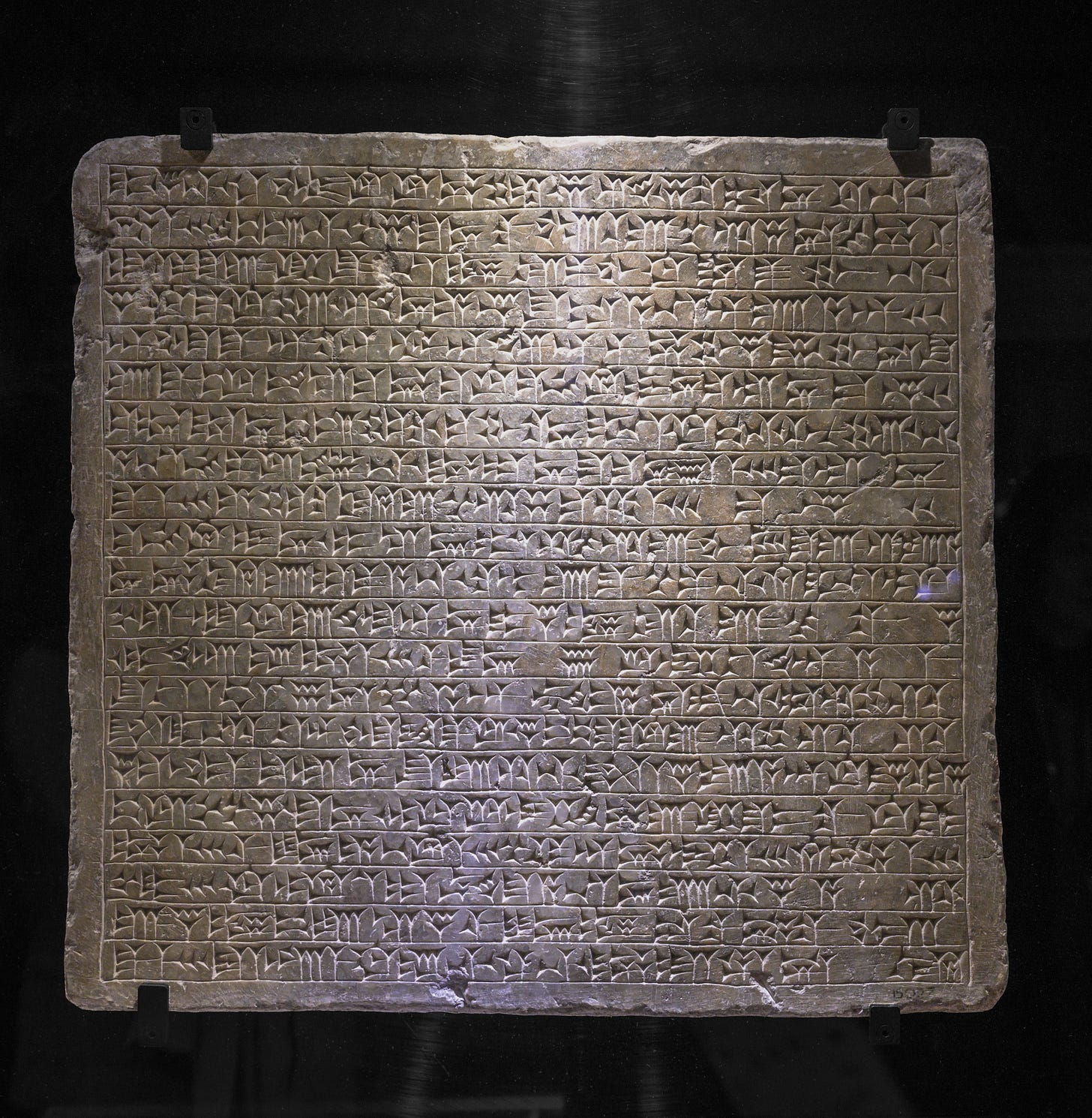Carving Arrogance into Stone
After the destruction of Ad in Al-Ahqaf a region believed to be in present-day Yemen or Oman. Another ancient Arab tribe rose: the people of Thamud. Though they lived in a different region Al-Ḥijr, in northwestern Arabia near Mada’in Salih and Al-Ula, they followed the same path of arrogance and met the same fate. They weren’t some weak or backward tribe. They were strong, skilled, smart and they were proud of it.
They carved homes straight into the sides of solid mountains, thinking nothing could ever destroy them.
“And [with] Thamūd, who carved out the rocks in the valley?” — Qur’an 89:9
But strength without humility leads to arrogance. And arrogance closes the heart to truth.
So Allah sent them a prophet from among their own people — Salih (peace be upon him). He wasn’t a stranger. He wasn’t sent to destroy them. He came with a message: worship Allah alone and stop your corruption before it’s too late.
But instead of listening, they mocked him. Like others before them, they demanded a miracle. They pointed to a massive rock and said: “If you’re really a messenger of God, make a she-camel come out of this stone.” and then by Allah’s will, it happened.
The Miracle That Broke Their Pride
Out of that rock, a living, breathing she-camel walked out. It wasn’t a trick. It wasn’t magic. It was a clear, open miracle from Allah and a test. She was peaceful and she belonged to Allah. The command was simple: let her graze freely, and she would drink from the well one day while they drank the next.
This is the she-camel of Allah [sent] to you as a sign. So leave her to eat within Allah’s land and do not touch her with harm, or you will be taken by a painful punishment.” (Qur’an 7:73)
But instead of respecting the sign, they got angry. Her presence exposed their pride. Her calmness exposed their rebellion and her drinking from the well gave them an excuse. They said she was using too much water but deep down, they just couldn’t stand what she represented — a proof they couldn’t deny.
So they plotted. And with full support from the tribe, a group of them slaughtered her in cold blood.
"But they denied him and hamstrung her. So their Lord brought down upon them destruction for their sin and made it equal upon all of them."
(Qur’an 91:14)
They didn’t kill her because they thought she was fake. They killed her because they knew she was real and they hated what that meant.
The Countdown Begins
After they killed the she-camel, Salih (peace be upon him) told them exactly what would happen:
"But they hamstrung her, so he said, 'Enjoy yourselves in your homes for three days. That is a promise not to be denied.'"
— Qur’an 11:65
They were given three days. Not as a chance to repent — their punishment was already sealed but as a final, terrifying countdown.
Each day, their faces changed color:
Day 1: Yellow
Day 2: Red
Day 3: Black
This detail is preserved in tafsir works by scholars like Ibn Kathir and Al-Tabari. It was a physical sign that their end was near. A visible reminder that they had crossed a line.
The Destruction
On the third day, the punishment struck. The Qur’an mentions multiple aspects of their destruction — a mighty blast (sayhah), a violent earthquake (rajfah), and their final state: lifeless bodies, collapsed in their homes.
“So the earthquake seized them, and they became within their home [corpses] fallen prone.”
— Qur’an 7:78“And the shriek seized those who had wronged, and they became within their homes [corpses] fallen prone.”
— Qur’an 11:67“So the punishment seized them, and they became from it leveled to the ground.”
— Qur’an 27:52
According to classical tafsir like Ibn Kathir, both the shriek (sayhah) and earthquake (rajfah) were part of their punishment — unleashed together as a divine blow from different angles. The sound was so intense it shattered their insides, and the quake flattened their structures, leaving no survivors among the disbelievers. This wasn’t a natural disaster. It was divine justice. Not just destroyed — erased.
The Believers Survived
Not everyone in Thamud was arrogant. There were a small group of true believers who followed Prophet Salih and respected the she-camel. They didn’t plot. They didn’t join the murder. They stayed loyal to the truth, even when the rest of their tribe mocked them and when the she-camel was killed, Allah didn’t punish them along with the guilty.
Before the punishment came, Allah commanded Salih and the believers to leave. He warned them not to stay behind because a terrible punishment was coming and they obeyed. They left. Then came the signs. Once the destruction was over, Prophet Salih returned to the ruins of his people. The Qur’an says:
“Then he turned away from them and said, ‘O my people, I had certainly conveyed to you the message of my Lord and advised you, but you do not like advisors.’”
— Qur’an 7:79
This didn’t happen while he was leaving. It happened after the punishment when he came back and saw what was left. He didn’t smile. He didn’t celebrate. He mourned. He looked at the destruction and said those words in sorrow, knowing they brought it upon themselves. That was the end of Thamud but Allah left their story behind for a reason — so the rest of us learn the lesson from it.
Proof in Stone: What Still Remains
Thamud wasn’t a myth. And their punishment wasn’t just a story. The ruins still stand — carved deep into sandstone cliffs in northwestern Saudi Arabia. Today, the site is known as Mada’in Salih and in the Qur’an, it’s called Al-Hijr. It’s real. You can see it.
In 2008, UNESCO designated Madā’in Ṣāliḥ as a World Heritage Site — the first in Saudi Arabia. More than 130 monumental tombs still remain, many with inscriptions that date back over 2,000 years. The tombs are carved into glowing red cliffs, eerily similar to Petra in Jordan — not by coincidence, but because both were shaped by the Nabataeans, a powerful Arab civilization that rose after Thamūd.
Inside and around these tombs, archaeologists found inscriptions in Thamudic, Aramaic, and early Nabataean scripts — proof that multiple civilizations passed through, built, and traded in this region over time.
But the oldest layer — the one that matches the Qur’an — belongs to Thamud.
“And certainly did the companions of the stone valley [Al-Ḥijr] deny the messengers. And We gave them Our signs, but from them they were turning away. And they used to carve from the mountains, houses, feeling secure. But the shriek seized them in the morning.” — Qur’an 15:80–82
Ancient records outside the Qur’an also confirm their existence:
Keep reading with a 7-day free trial
Subscribe to VEINS OF TRUTH to keep reading this post and get 7 days of free access to the full post archives.


